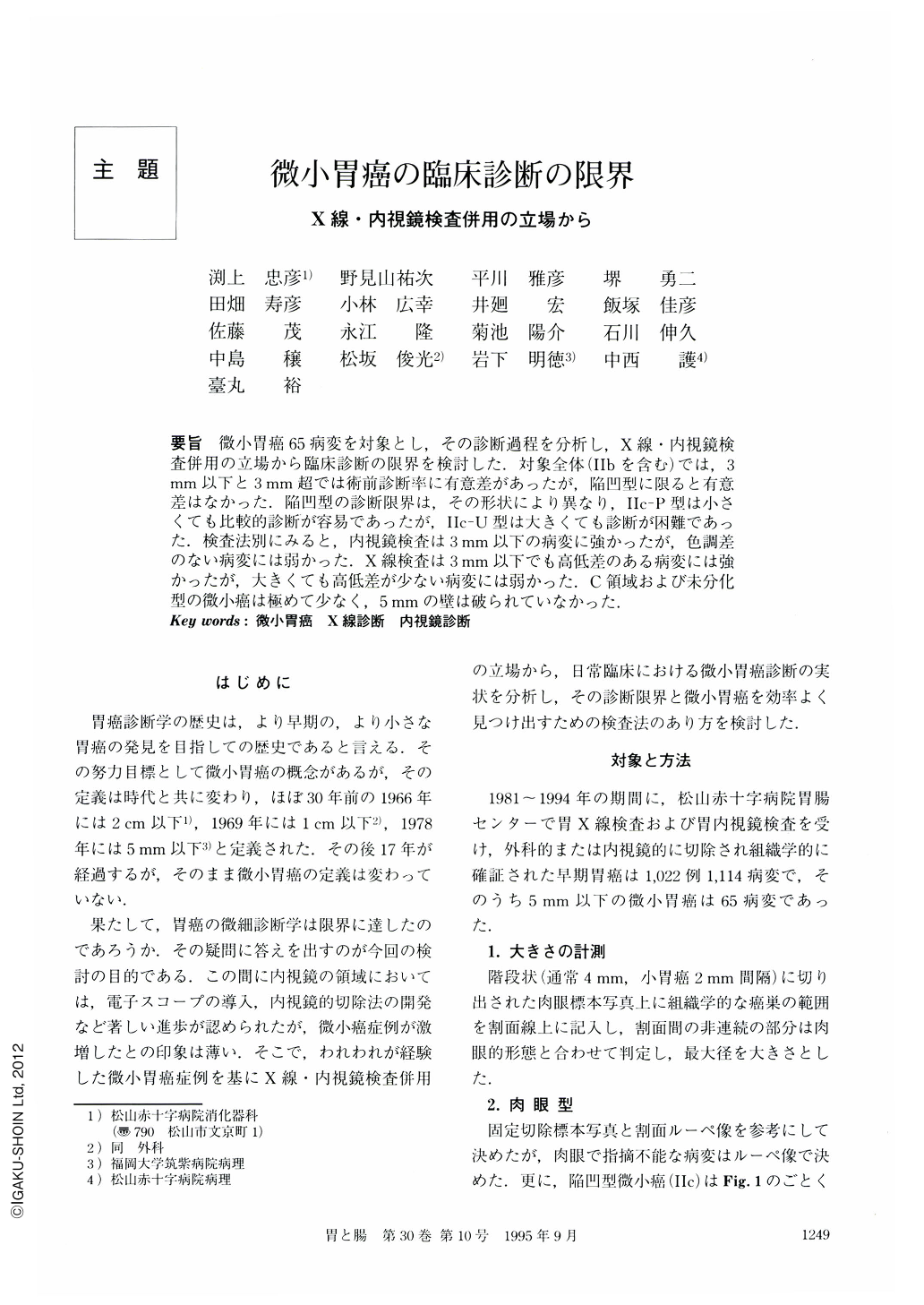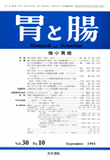Japanese
English
- 有料閲覧
- Abstract 文献概要
- 1ページ目 Look Inside
- サイト内被引用 Cited by
要旨 微小胃癌65病変を対象とし,その診断過程を分析し,X線・内視鏡検査併用の立場から臨床診断の限界を検討した.対象全体(Ⅱbを含む)では,3mm以下と3mm超では術前診断率に有意差があったが,陥凹型に限ると有意差はなかった.陥凹型の診断限界は,その形状により異なり,Ⅱc-P型は小さくても比較的診断が容易であったが,Ⅱc-U型は大きくても診断が困難であった.検査法別にみると,内視鏡検査は3mm以下の病変に強かったが,色調差のない病変には弱かった.X線検査は3mm以下でも高低差のある病変には強かったが,大きくても高低差が少ない病変には弱かった.C領域および未分化型の微小癌は極めて少なく,5mmの壁は破られていなかった.
We reviewed 65 lesions of minute gastric cancer, and analyzed the process of their diagnoses. The limitations of clinical diagnosis from roentogenographic and endoscopic viewpoints were discussed. The preoperative rate of successful diagnosis of cancers less than 3 mm and those larger than 3 mm was significantly different. However, there was no difference in the rate of diagnosis of depressed-type cancers irrespective of whether they were less or over 3 mm in diameter. The diagnosis of depressed-type cancers were limited by their shape. Type Ⅱc-P was relatively easy to find, but type Ⅱc-U was more difficult to find. In regard to methods; endoscopy was useful for detecting minute lesions smaller than 3 mm, but not for lesions lacking color differences. While roentogenography was useful for detecting the lesions with some uneveness, it was not effective for detecting lesions without such uneveness. Minute cancers located in the C area or poorly differentiated types were extremely rare, confirming the generally recognized contention that such cancers are difficult to detect if less than 5 mm in diameter.

Copyright © 1995, Igaku-Shoin Ltd. All rights reserved.


